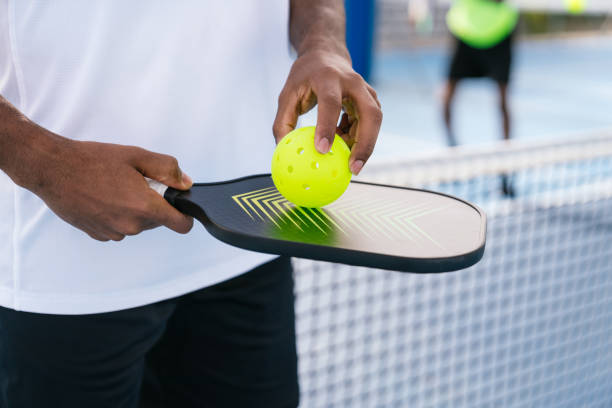Pickleball has emerged as one of the fastest-growing sports in America, captivating players of all ages. Combining elements from tennis, badminton, and table tennis, this unique sport offers an enjoyable and accessible way for individuals to stay active. The growing popularity of the game stems from its engaging nature, the relatively low physical demands compared to other racquet sports, and the strong community it fosters among players. Numerous facilities have begun to accommodate the sport, providing dedicated spaces for enthusiasts to practice their skills, meet new friends, and partake in friendly competition.
The Rise of Pickleball Through History
Pickleball originated in 1965 on Bainbridge Island near Seattle, Washington, as a fun activity for families. Initially, the game was played with homemade equipment and modified rules. As word spread, more people became interested, leading to its formalization into a recognized sport. The name “pickleball” has some folklore surrounding it. Some believe it was named after a family dog, while others attribute it to the sport’s mixed nature, akin to a “pickle boat” in crew racing. The sport transitioned from a simple pastime to an organized competition, showcasing its versatility and appeal.
Community Building Through Pickleball
Pickleball is about creating relationships and fostering community spirit. Many local organizations host events and clinics targeted at beginners, allowing newcomers to meet fellow players and learn the rules together. These gatherings often lead to lasting friendships and community involvement. The sport encourages intergenerational interaction: kids, parents, and grandparents can all play together, breaking down barriers and uniting families on the court. Many players appreciate the social aspect of the game, emphasizing that the laughter and camaraderie shared during matches are just as rewarding as winning. With numerous players reporting they seek out a pickleball court near me to continue this bonding experience, it is evident that the sport has successfully woven itself into the fabric of countless communities. The allure of tournament play adds to the excitement, as local leagues and clubs increasingly host competitions for varying skill levels, ranging from recreational play to more serious leagues for seasoned players.
Accessibility and Inclusivity as The Key to Popularity
One of the major factors contributing to the rapid growth of pickleball is its accessibility. Unlike many sports that require extensive training or expensive gear, anyone can pick up a paddle and start playing immediately. The equipment needed is minimal, often only requiring a paddle and a ball. As a result, many communities have started to embrace the sport, building dedicated facilities and offering classes for beginners. This inclusivity allows people of all ages and skill levels to participate, making for a diverse group of players. A recent statistic indicates that there are over 4.2 million pickleball players in the United States as of 2020, and this number continues to grow annually, as new players discover the game through local clubs or recreation centers.
Health Benefits of Pickleball
Beyond the social benefits, playing pickleball as a form of exercise offers numerous health advantages. The game provides a low-impact workout that is easy on the joints, making it suitable for players of all ages. Engaging in regular pickleball sessions can help improve cardiovascular health, flexibility, and balance. Studies show that just two to three sessions a week can lead to improved endurance and muscle strength. The mental aspect of the game also plays a significant role in enhancing well-being. Players often report lower stress levels and increased happiness after games due to the social interaction involved. Notably, research suggests that physical activity like pickleball stimulates the release of endorphins, which can lead to improved mood and a reduced risk of depression.
The Future of Pickleball
As the sport continues to expand, many advocates push for pickleball to be recognized as an official Olympic sport. With growing interest, it has even begun to capture the attention of sponsors and brands looking to partner with various leagues and players. The demographic of pickleball players has rapidly diversified, leading to a much broader appeal for future expansion. As facilities are constructed and adapted for this sport, communities that may have previously lacked access to tennis or other racquet sports can now enjoy pickleball. Consequently, we will likely see more public courts and programs tailored to meet this demand, helping to solidify pickleball’s presence on the national sports scene. Continued commitment from both local organizations and the national governing body of pickleball will undoubtedly pave the way for sustained growth.
Economic Impact of Pickleball on Local Communities
The growth of pickleball is creating tangible economic benefits for communities. Cities and towns that invest in pickleball facilities often see increased tourism, as players travel to participate in tournaments and regional competitions. Local businesses, such as restaurants, hotels, and sporting goods stores, benefit from the influx of visitors and the rising demand for equipment. Parks and recreation departments are recognizing that dedicated pickleball courts can generate revenue through memberships, lessons, and events. This economic ripple effect demonstrates how the sport goes beyond health and social value to become a driver of local development.
Pickleball’s rapid rise in popularity highlights its unique ability to combine accessibility, inclusivity, and health benefits with a strong sense of community. What started as a backyard game has grown into a nationwide movement that attracts players from all walks of life. Its ease of play, minimal equipment requirements, and low-impact nature make it an inviting option for both beginners and seasoned athletes. As it continues to expand, pickleball is influencing the economy of local communities. With its potential for Olympic recognition, pickleball’s future looks brighter than ever.
Published by HOLR Magazine.




